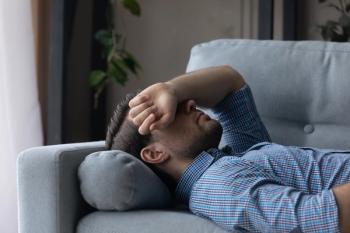
CBT-IB: A Bipolar-Specific, All-Around Psychotherapy
A single approach combines potent elements from 5 bipolar-specific therapies.
RESEARCH UPDATE
In the early 2000s, there was no routine role for psychotherapy in the treatment of bipolar disorder. Then came 5 bipolar-specific therapies with
- Prodrome detection
- Psychoeducation
- Cognitive behavioral therapy (CBT) for bipolar disorder
- Interpersonal and social rhythm therapy (IPT/SRT)
- Family focused therapy
But more recently, a single therapy that combines many of the potent elements in each of these therapies has been developed: CBT-IB, cognitive behavioral therapy for insomnia, for bipolar disorders. It was surprisingly better than psychoeducation in a
Of course, one cannot therefore conclude that CBT-IB is the best of all, because study populations in the various psychotherapy trials differed significantly. However, for therapists who want a simple, logical combination of existing bipolar-specific therapies-one with a solid randomized trial showing efficacy, with a free online 4-page treatment manual-CBT-IB is worth investigating.
It lacks the emphasis on prodrome detection and deep understanding of one’s illness found in the
CBT-IB also lacks emphasis on understanding interpersonal, social, and intrafamilial factors of
CBT-IB includes the following elements:
- Cognitive behavioral therapy for insomnia (CBT-I)
- Social rhythm therapy
- Chronotherapy
- Motivational interviewing (MI)
CBT-I is a triad of sleep hygiene, standard CBT techniques, and sleep restriction therapy; these elements and a remarkable free app supporting their implementation were recently reviewed in my
Two important differences in the CBT-IB version: sleep restriction is not allowed to be more than 6.5 hours per night, to prevent induction of manic or mixed states; and a regular bedtime is promoted, not “wait to go to bed until you are sleepy.”
Social rhythm therapy includes helping patients develop those regular schedules, especially a regular bedtime and a regular rise time. The latter can be facilitated with a dawn simulator, a form of chronotherapy that is far easier to use than a light box and very inexpensive.
Free apps are available to make a smartphone function as a dawn simulator (although
No clinical trials are underway (per
An essential ingredient for establishing a more natural environment: when the sun goes down, it
should
be dark!
Chronotherapy emphasizes the use of therapeutic light and darkness to establish and maintain a strong circadian rhythm (this therapy’s overnight sleep deprivation component, now known by the euphemism “wake therapy,” is not part of CBT-IB, though it certainly informs the process).
Finally, most readers will be familiar with motivational interviewing, but in my experience, few who know what it is know how to do it well. The 4-page CBT-IB manual is worth reading simply to see how MI is incorporated: it’s a lovely example of the real MI spirit, integrated in a no-nonsense program.
One more twist on all this is yet to come. Sleep restriction therapy is daunting process for patient and therapist. The app referenced above can really help. But the other element in CBT-IB that patients find challenging is letting go of their electronic devices at night. This is an essential ingredient for establishing a more natural environment: when the sun goes down, it should be dark!
In my next article in this trio on CBT-IB for Psychiatric Times, I’ll present a stunning randomized trial of amber lenses for dark therapy. Sure enough, getting rid of exposure to blue light at night really does provide a “virtual darkness” sufficient to radically change the course of bipolar disorder. (Patients can have their darkness and eat it too, so to speak.)
This makes selling a natural approach to sleep much easier: a regular bedtime with a “winding down” hour or 2 ahead of time, in physiologic if not actual darkness. And that makes the whole CBT-IB package much easier to get underway.
Disclosures:
Dr Phelps is Director of the Mood Disorders Program at Samaritan Mental Health in Corvallis, Ore. He is the Bipolar Disorder Section Editor for Psychiatric Times. Dr Phelps stopped accepting honoraria from pharmaceutical companies in 2008 but receives honoraria from McGraw-Hill and W.W. Norton & Co. for his books on bipolar disorders.
References:
1. Phelps J.
2. Harvey AG, Soehner AM, Kaplan KA, et al.
3. Parikh SV, Zaretsky A, Beaulieu S, et al.
4. Colom F, Vieta E, Martinez-Aran A, et al.
5. Colom F, Vieta E, Sánchez-Moreno J, et al.
6. Hidalgo-Mazzei D, Mateu A, Reinares M, et al.
Newsletter
Receive trusted psychiatric news, expert analysis, and clinical insights — subscribe today to support your practice and your patients.

















